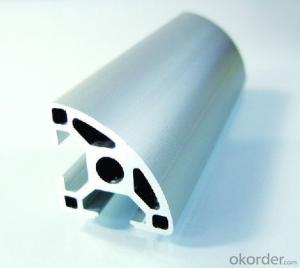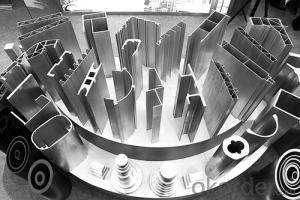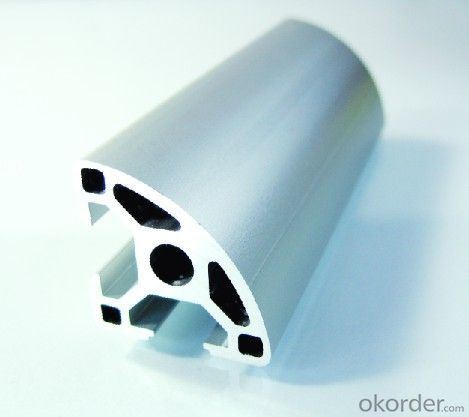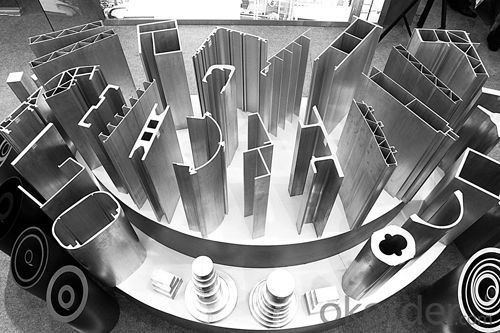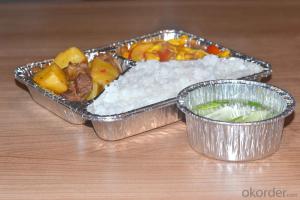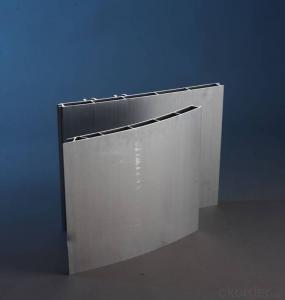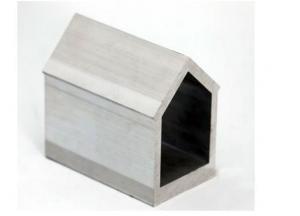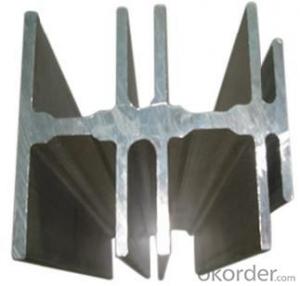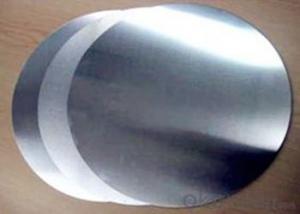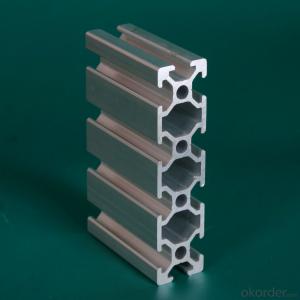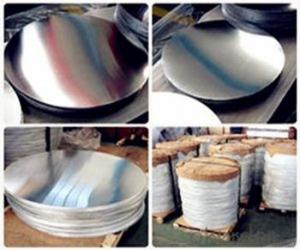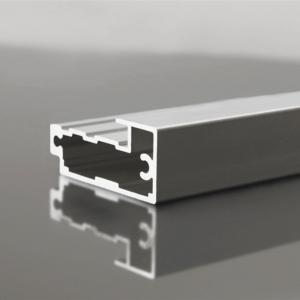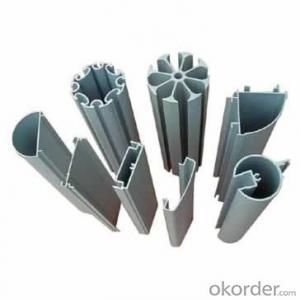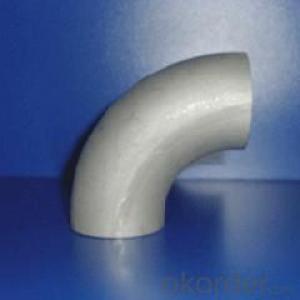High Quality Aluminum Extrusion Profiles in India
- Loading Port:
- China Main Port
- Payment Terms:
- TT OR LC
- Min Order Qty:
- -
- Supply Capability:
- -
OKorder Service Pledge
OKorder Financial Service
You Might Also Like
Aluminium is a relatively soft,durable, lightweight, ductile and malleablemetal with appearance ranging from silvery to dull gray,depending on the surface roughness. It is nonmagnetic and does not easilyignite. A fresh film of aluminium serves as a good reflector (approximately92%) of visible light and an excellent reflector (as much as98%) of medium and far infrared radiation. The yield strength of pure aluminium is 7–11 MPa,while aluminium alloys have yield strengths ranging from200 MPa to 600 MPa. Aluminium has about one-third the density and stiffnessof steel. It iseasily machined,cast, drawn and extruded.
Aluminum Profile
Material | Alloy 6063,6061,6005or according to customer’s choice |
Temper | T3, T4, T5, T6 |
Surface | Anodize, electrophoresis, powder coating, PVDF coating, wood grain painting, matted, etc. |
Length | Coating 6.5 meters, Anodizing 6.5 meters, Mill finish 5 meters |
Application | Industrial, electrical equipment(TV set, air conditioner, refrigerator, computer), decoration,construction, transportation |
Custom Made | We can package following with customer's request. |
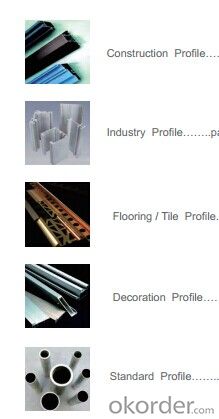
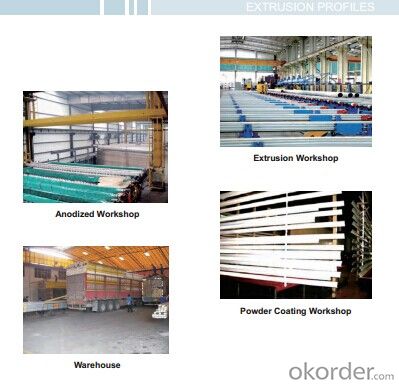
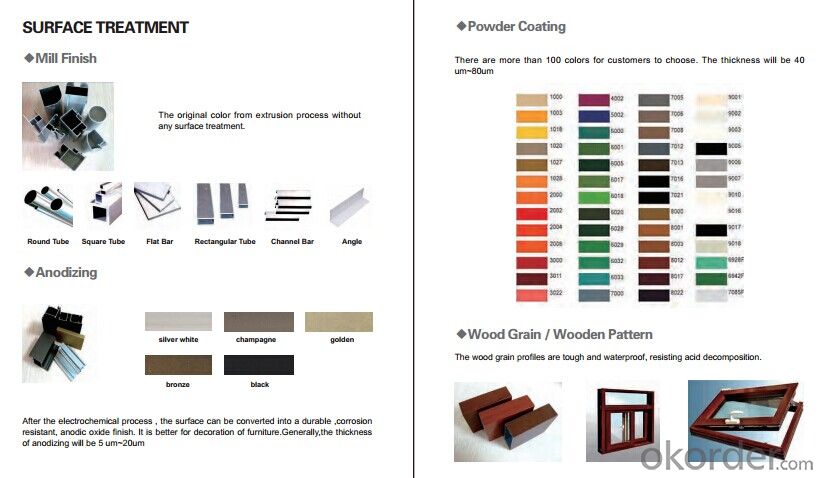
- Q: How do aluminum profiles contribute to energy-efficient lighting systems?
- Enhancing the energy efficiency of lighting systems is a significant role played by aluminum profiles. The lightweight and highly conductive nature of aluminum allows for efficient heat dissipation, which is crucial in maintaining the lifespan and efficiency of bulbs. By utilizing aluminum profiles, the generated heat from the light source can be effectively transferred away, ensuring optimal performance and longevity. Additionally, aluminum profiles offer versatility and the ability to accommodate various lighting components such as LED strips or bulbs, reflectors, and lenses. These profiles provide a stable and secure housing for these components, preventing any damage or misalignment that could affect the efficiency of the lighting system. Furthermore, precision engineering in aluminum profiles makes installation and maintenance easy, further contributing to the overall energy efficiency of the system. Another significant advantage of aluminum profiles is their capability to act as a heat sink. By diverting heat away from the light source, the profiles help maintain lower operating temperatures, resulting in reduced energy consumption and increased efficiency of the lighting system. This is especially important for LED lighting, as they are sensitive to heat and can experience a decline in light output if not adequately cooled. Aluminum profiles enable efficient thermal management, ensuring that LED lights operate at their optimum level, saving energy and reducing the need for frequent replacements. Moreover, aluminum is a recyclable material, making it an environmentally friendly choice for lighting systems. The usage of aluminum profiles promotes sustainable practices by reducing the demand for raw materials and minimizing waste. This aligns with the principles of energy efficiency and conservation, as it reduces the overall carbon footprint of the lighting system. In summary, aluminum profiles contribute to energy-efficient lighting systems by facilitating effective heat dissipation, providing a stable housing for lighting components, acting as a heat sink, and promoting sustainable practices. These profiles enhance the performance, lifespan, and energy efficiency of lighting systems, making them an essential component in modern lighting solutions.
- Q: Fenglv aluminum material how ah? What aluminum materials do you use for windows and doors?
- Domestic aluminum quality is about the same, mainly you installed in the window accessories, is the key to the life of the service, recommend several brands Bar Reid Jan Ron Lixin spring is not recommended, quality is not very rely on live
- Q: Can aluminum profiles be used in medical equipment manufacturing?
- Yes, aluminum profiles can be used in medical equipment manufacturing. Aluminum is a lightweight and durable material that offers various advantages for medical applications. It is corrosion-resistant, which is crucial in medical settings where equipment is often exposed to chemicals and sterilization processes. Aluminum profiles also provide excellent thermal conductivity, allowing for efficient heat dissipation in medical devices. Furthermore, aluminum profiles can be easily customized to meet specific design requirements, allowing for the creation of complex and precise medical equipment. They can be machined, welded, and formed into various shapes and sizes, making them suitable for a wide range of medical applications, such as surgical instruments, imaging equipment, patient beds, and wheelchairs. In addition to its mechanical properties, aluminum is environmentally friendly and recyclable, aligning with the growing sustainability requirements in the medical industry. It is non-toxic and does not release harmful substances, ensuring the safety of patients and healthcare professionals. Overall, aluminum profiles offer numerous benefits for medical equipment manufacturing, including durability, corrosion resistance, thermal conductivity, customization options, and sustainability.
- Q: How do aluminum profiles handle extreme weather conditions?
- Aluminum profiles are known for their exceptional durability and resilience, making them highly capable of handling extreme weather conditions. Due to their inherent corrosion resistance, aluminum profiles can withstand harsh weather elements such as heavy rain, snow, extreme temperature fluctuations, and even high levels of UV radiation without corroding or deteriorating. One of the key attributes of aluminum is its ability to create a protective oxide layer on its surface, known as aluminum oxide. This layer acts as a natural barrier, shielding the metal from moisture, salt, and other corrosive agents present in the atmosphere. As a result, aluminum profiles remain unaffected by rain or snow, and they do not rust or corrode like other metals. Furthermore, aluminum's thermal conductivity allows it to quickly dissipate heat, preventing any damage caused by extreme temperature variations. Whether exposed to scorching heat or freezing cold, aluminum profiles expand and contract minimally, which helps maintain their structural integrity and prevents warping or cracking. Moreover, aluminum profiles can withstand high wind loads, making them suitable for areas prone to hurricanes, tornadoes, or strong gusts. Their lightweight yet sturdy nature enables them to withstand significant pressure without bending or breaking. In terms of UV radiation, aluminum profiles have excellent resistance to fading and discoloration. They can effectively endure prolonged exposure to sunlight without losing their original color or surface finish. This makes them an ideal choice for outdoor applications, such as windows, doors, and facades, where they remain visually appealing and structurally sound even in extreme weather conditions. Overall, aluminum profiles exhibit remarkable durability, corrosion resistance, thermal stability, and resistance to UV radiation, allowing them to effectively handle and withstand the challenges posed by extreme weather conditions.
- Q: How do aluminum profiles contribute to energy-saving initiatives?
- Aluminum profiles play a significant role in promoting energy-saving initiatives for several reasons. Firstly, aluminum is a lightweight material, which means that less energy is required during transportation and installation compared to other heavy construction materials. This reduces the overall carbon footprint associated with the construction process. Additionally, aluminum profiles have excellent thermal conductivity properties. This enables them to efficiently transfer heat, which is crucial for energy-saving initiatives. By using aluminum profiles in windows, doors, and facades, buildings can benefit from improved insulation and reduced thermal bridging. This helps to maintain a comfortable indoor temperature while minimizing the need for excessive heating or cooling, thus reducing energy consumption. Moreover, aluminum profiles can be effectively combined with energy-efficient glazing systems. These systems include double or triple glazing, low-E coatings, and gas-filled cavities, which further enhance the thermal performance of windows and facades. By using aluminum profiles in conjunction with energy-efficient glazing, buildings can significantly reduce heat loss or gain, resulting in reduced energy usage for heating and cooling. Furthermore, aluminum is a highly durable and long-lasting material. Its corrosion resistance properties make it suitable for use in various weather conditions, reducing the need for frequent replacements. This durability ensures that the energy-saving benefits provided by aluminum profiles are maintained over an extended period, reducing the environmental impact associated with frequent material replacements. Lastly, aluminum is a recyclable material with a high recycling rate. The energy required to recycle aluminum is significantly lower compared to the energy needed for primary production. By promoting the use of aluminum profiles, we encourage the recycling and reuse of this material, thereby reducing the demand for new aluminum production and conserving energy resources. In conclusion, aluminum profiles contribute to energy-saving initiatives by reducing transportation and installation energy consumption, improving thermal insulation, facilitating energy-efficient glazing systems, providing durability, and promoting recycling. By incorporating aluminum profiles in construction projects, we can significantly contribute to energy conservation and sustainability efforts.
- Q: What are the advantages of using aluminum profiles in the oil and gas industry?
- There are several advantages of using aluminum profiles in the oil and gas industry. Firstly, aluminum profiles offer exceptional strength-to-weight ratio. This means that they provide high structural integrity while being lightweight, which is crucial in industries like oil and gas where equipment needs to be transported and installed in various locations. The lightweight nature of aluminum profiles also reduces the load on structures and equipment, resulting in energy savings and improved efficiency. Secondly, aluminum profiles are highly corrosion-resistant. The oil and gas industry often operates in harsh environments, including exposure to saltwater, chemicals, and extreme temperatures. Aluminum's natural oxide layer acts as a protective barrier, preventing corrosion and ensuring durability in these challenging conditions. This resistance to corrosion significantly reduces maintenance and replacement costs over the lifespan of the equipment. Additionally, aluminum profiles are non-magnetic, making them suitable for applications where magnetic interference is a concern. In the oil and gas industry, where precision and accuracy are crucial, the non-magnetic nature of aluminum profiles ensures that equipment operates without any electromagnetic interference, ensuring data accuracy and reliable performance. Furthermore, aluminum profiles can be easily fabricated and customized to meet specific requirements. They can be extruded into various shapes, sizes, and configurations, allowing for endless design possibilities. This flexibility in manufacturing makes aluminum profiles highly versatile, enabling them to be used in a wide range of applications within the oil and gas industry, including pipe racks, platforms, support structures, and access systems. Lastly, aluminum is a sustainable and environmentally friendly material. It is 100% recyclable without losing its properties, making it a sustainable choice for the oil and gas industry that increasingly focuses on reducing its carbon footprint. Aluminum's recyclability also contributes to cost savings and resource conservation. In summary, the advantages of using aluminum profiles in the oil and gas industry include their high strength-to-weight ratio, corrosion resistance, non-magnetic properties, easy fabrication, and recyclability. These characteristics make aluminum profiles a reliable and cost-effective solution for various applications in this industry.
- Q: Are aluminum profiles suitable for electrical conductivity applications?
- No, aluminum profiles are not suitable for electrical conductivity applications. While aluminum is a good conductor of electricity, aluminum profiles often have an oxide layer on their surface, which can hinder electrical conductivity. Additionally, aluminum profiles are prone to corrosion, which can further impact their conductivity. Therefore, materials with better conductivity properties such as copper or silver are usually preferred for electrical conductivity applications.
- Q: Are aluminum profiles suitable for constructing energy-efficient building systems?
- <p>Yes, aluminum profiles can be used to create energy-efficient building systems. They are lightweight, strong, and have excellent thermal conductivity, which can be advantageous in heat transfer management. Aluminum profiles can be used in the construction of windows, doors, and facades, which are critical for insulation and energy conservation. Additionally, their malleability allows for precise engineering to minimize heat loss and maximize energy efficiency. Proper insulation and sealing techniques can further enhance the energy efficiency of buildings constructed with aluminum profiles.</p>
- Q: How do aluminum profiles perform in vibration and shock absorption applications?
- Aluminum profiles are known to excel in vibration and shock absorption applications due to their lightweight yet durable nature. They have excellent strength-to-weight ratio, allowing them to effectively dampen vibrations and absorb shocks. Additionally, aluminum profiles possess good flexibility and resilience, enabling them to withstand repeated impacts without deformation or failure. Their high thermal conductivity also aids in dissipating heat generated during vibrations. Overall, aluminum profiles are highly suitable for vibration and shock absorption applications, providing reliable performance and longevity.
- Q: I would like to know where Urumqi has industrial aluminum profiles, such as 3030, 4040, 3060 aluminum, etc., note that industrial aluminum, not doors and windows, aluminum profiles, the difference between the two very large!
- And shares in the east railway station there, the east railway station and then go one Station Road (near the North Main Road) can see.
Send your message to us
High Quality Aluminum Extrusion Profiles in India
- Loading Port:
- China Main Port
- Payment Terms:
- TT OR LC
- Min Order Qty:
- -
- Supply Capability:
- -
OKorder Service Pledge
OKorder Financial Service
Similar products
Hot products
Hot Searches
Related keywords
